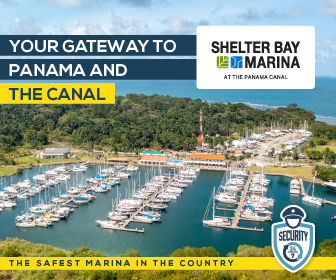Sailing Advisory North West Coast of Caribbean Colombia
Weather North West Coast of Caribbean Colombia from David Jones book “The Concise Guide to Caribbean Weather”.
Published 10 years ago, updated 5 years ago
Perhaps because of lack of information, very few weather forecasts accurately predict conditions off the northwest coast of Caribbean Colombia, particularly that part that stretches from Punta Gallinas in the north to Cartagena in the south.
Winds and seas extending out to approximately 120 to 150 nautical miles off this coast can be some of the most severe encountered by cruising yachts in the Caribbean in non-tropical cyclone conditions. For instance in the months of January through March, there is approximately a 40 percent chance of 35 knots winds with seas in the 12 to 15 feet range. This is due to several factors.
First, there is the land effect from The Andes. From Punta Gallinas, they gradually rise along the coast in a southwesterly direction to reach a height of 5775 meters at the summit of Pico Cristobal Colon northeast of Cartagena and the highest mountain peak near the Caribbean coastline. The Andes mountain chain in the area has the effect of compressing the normally northeasterly trade wind into an east-northeasterly direction along the coast. This is especially prevalent in the months of January through March when the trade winds are normally blowing more strongly than the rest of the year.
Secondly, low-pressure areas frequently form every fourth day during the period January-March over the mainland of Venezuela in the vicinity of the Colombian border. Although these are non-circulatory systems they do not have the effect of increasing the pressure gradient in the region as well as bringing increased convection activity.
Thirdly sea states tend to be higher primarily because of long uninterrupted fetch of approximately 700 nautical miles from the Virgin Islands that lie to the east-northeast of Colombia. Another factor can be the counter-current that sometimes flow in an east-northeasterly direction along the northwest coast of Colombia from the southwest Caribbean. There is also evidence of a northeasterly tidal stream at times. As in any situation where the wind is blowing against a current, sea hights become steeper and wave periods shorter.
Fourthly, the diurnal variation in wind speed. It was noted earlier that the stronger the trade winds are blowing, the greater the diurnal variation is likely to be with higher winds generally occurring from midday to the early hours the following morning.
Due to a combination of all these factors, when winds in the central Caribbean Basin and in the southwestern Caribbean are, for instance, in the 20 to 25 knots range and sea states in the 6 to 9 feet range, winds off the northwestern coast of Colombia are frequently in the 25 to 35 knots range and seas in the 12 to 15 feet range, with, of course, the stronger winds occurring at night. If there is any convection activity coming off the mainland of Colombia higher gusts can be expected.
Lighter winds and seas seem to prevail off the coast October through early December and April through October when pressure gradients are generally lighter, although this very much depends upon high pressure in the southwest North Atlantic which impact the pressure gradient off the northwest coast of Colombia.
The conventional wisdom is that the best course of action when passaging this area is to stay outside the 2000 meter depth contour off the northwest coast of Colombia to avoid the worst of seas. However, based on a number of passage reports, this may only be valid if there is a counter-current running northeast. It is up to the skipper to decide and depends upon whether or not a northwest current is running inshore.
Finally, a word of caution when either approaching or sailing to the west of Barranquilla. If there has been a period of heavy rain over Colombia mainland, this can cause the Magdalena River, which enters the Caribbean near Barranquilla, to rise. As a result, there is not only a greater outflow of water pushing a yacht to the west but very often a lot of debris, such as tree trunks and branches, will be found floating in the water.
Percentage chance of strong winds (25 to 40 knots) and high seas (3 to 5 meters):
December 10-30%
January – March 30-40%
April – May 20-30%
June – July 10-20%
August – November 10%
Compiled by Karsten Staffeldt, October 2003, reviewed and updated May 2014
E-mail: [email protected] or [email protected]
Related to following destinations: Barranquilla, Caribbean Coast (Colombia), Cartagena, Colombia
Related to the following Cruising Resources: Caribbean Sea, Routing




